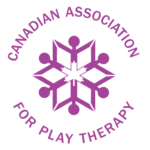Autism in a Play Therapy Setting August 14
Overview:
More individuals visit the play therapy room with a neurotypical presentation than ever before. Join your colleagues to balance gaining theoretical knowledge with practical clinical experiences. Case conceptualization and treatment planning will inform directive and non-directive treatment. Participants will gain knowledge of autism spectrum disorder while learning about a variety of interventions that they can integrate into play therapy practice.
Learning Outcomes:
- List diagnostic criteria for ASD that are relevant for play
- Name common myths/misinformation about ASD that might hinder progress in Play Therapy.
- Explain the concept of Executive Function and how it applies to Play
- Describe the grief process of parents/caregivers and how it impacts Play
- Name research-based play therapy interventions that would be appropriate for clients on the spectrum.
- Conceptualize a case for children/teens on the spectrum and create Play Therapy treatment plans that address dysregulation, lagging social skills, sensory based challenges, executive functioning and the superpowers of having autism.
- Identify directive and non-directive play therapy approaches that address: dysregulation issues, lagging social skills, sensory based challenges and executive
- Discuss ways to involve caregivers in the play therapy


Autism in a Play Therapy Setting August 14
Overview:
More individuals visit the play therapy room with a neurotypical presentation than ever before. Join your colleagues to balance gaining theoretical knowledge with practical clinical experiences. Case conceptualization and treatment planning will inform directive and non-directive treatment. Participants will gain knowledge of autism spectrum disorder while learning about a variety of interventions that they can integrate into play therapy practice.
Learning Outcomes:
- List diagnostic criteria for ASD that are relevant for play
- Name common myths/misinformation about ASD that might hinder progress in Play Therapy.
- Explain the concept of Executive Function and how it applies to Play
- Describe the grief process of parents/caregivers and how it impacts Play
- Name research-based play therapy interventions that would be appropriate for clients on the spectrum.
- Conceptualize a case for children/teens on the spectrum and create Play Therapy treatment plans that address dysregulation, lagging social skills, sensory based challenges, executive functioning and the superpowers of having autism.
- Identify directive and non-directive play therapy approaches that address: dysregulation issues, lagging social skills, sensory based challenges and executive
- Discuss ways to involve caregivers in the play therapy
